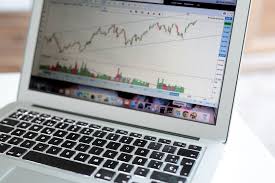
A Beginner’s Guide to CFD Trading : Understanding the Basics
Contracts for Difference (CFDs) are revolutionizing how individuals trade and gain exposure to global financial markets. Though complex at first glance, CFD Trading has become appealing to both novice and seasoned traders due to its flexibility and range of opportunities. Here’s a simplified breakdown of what CFD Trading entails and why it’s gaining popularity.
What Are CFDs?
cfd trading are derivative products that allow traders to speculate on the price movements of various financial instruments—like stocks, commodities, forex, and indices—without owning the underlying asset. Rather than buying or selling the actual asset, traders enter into an agreement with a broker to exchange the difference in the asset’s price from the time the contract is opened until it is closed.
For example, instead of purchasing a physical stock of Company XYZ, a CFD trader can benefit from price fluctuations in XYZ shares without actually owning them.
Key Features of CFD Trading
1. Leverage
One distinguishing advantage of CFDs is leverage. Traders can enter positions much larger than their account balance, amplifying both potential profits and losses. Leverage ratios generally range from 5 to 30 times the invested capital, depending on regulations in various countries. While leverage can enhance returns, it also increases risk, making risk management crucial.
2. Access to Global Markets
CFD platforms enable access to a wide range of markets, from gold to global indices like the S&P 500. This versatility makes CFDs an accessible choice for traders looking to diversify their portfolios.
3. Two-Way Trading
With CFDs, traders can speculate on both rising (long positions) and falling (short positions) markets. This feature appeals to those who aim to benefit from market volatility, regardless of direction.
Pros and Risks
CFDs bring several advantages such as low capital requirements, direct access to multiple markets, and no ownership obligations. However, risks include market volatility, over-leveraging, and varying broker fees.
Final Thoughts
CFD Trading offers exciting possibilities for those looking to participate in financial markets without directly owning assets. However, understanding leverage, market trends, and risk management is key to making informed decisions. Novices are advised to start with demo accounts or small trades while exploring this dynamic Trading option. With the right strategies, CFD Trading holds significant potential as a tool for diversification and wealth-building in the modern financial era.
Proudly powered by WordPress. Theme by Infigo Software.